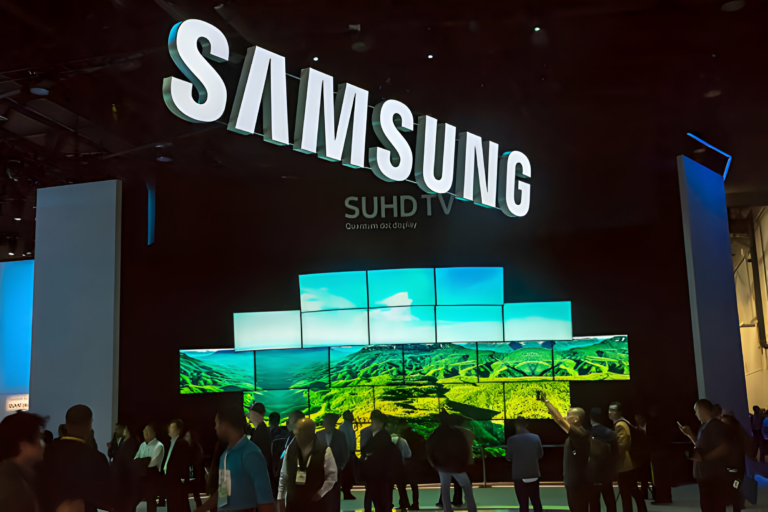What Does Lbvs Mean On Facebook
Introduction
In today’s digital age, social media platforms have become an integral part of our lives. Facebook, in particular, has emerged as a powerful tool for businesses and content creators to connect with their audience and promote their products or services.

One key metric that plays a crucial role in the success of any Facebook page is the “LBVS” or “Link-Based Video Shares”. Understanding LBVS and its impact on Facebook’s algorithm is essential for businesses and content creators to effectively reach and engage with their target audience.
What are LBVS on Facebook and why should you care?
LBVS refers to the number of times a video link is shared on Facebook. It is an important metric because it directly influences the visibility and reach of a post. When a video link is shared by users, it signals to Facebook that the content is valuable and engaging, leading to higher distribution in users’ news feeds. This means that the more LBVS a video receives, the more likely it is to be seen by a larger audience.
For businesses and content creators, understanding LBVS is crucial because it directly impacts the success of their Facebook page. Higher LBVS means increased visibility, reach, and engagement with their target audience. It also helps in building a loyal audience base who are more likely to share and engage with future content. Therefore, businesses and content creators need to focus on creating compelling video content that resonates with their audience and encourages them to share it with their networks.
The history and evolution of LBVS on social media
In the early days of social media, content distribution was primarily based on chronological order. However, as the number of users and content on platforms like Facebook grew exponentially, it became necessary for algorithms to determine which content should be shown to users. This led to the emergence of metrics like LBVS as key factors in determining the visibility of posts.
Facebook recognized the importance of LBVS in determining the quality and relevance of content. As a result, they made significant changes to their algorithm to prioritize content with higher LBVS. This shift in algorithmic focus led to a change in the way businesses and content creators approached their social media strategy, with an increased emphasis on creating engaging and shareable video content.
Understanding the algorithm: How Facebook determines LBVS
Facebook’s algorithm takes into account various factors to determine the LBVS of a video link. These factors include user engagement and interaction, content quality, and relevance. User engagement refers to actions such as likes, comments, and shares, which indicate that users find the content valuable and engaging. Content quality and relevance are determined by factors such as video length, captions, and thumbnail images.
It is important for businesses and content creators to understand these factors and optimize their video content accordingly. By creating high-quality videos that are relevant to their target audience, they can increase the chances of receiving higher LBVS and reaching a larger audience.
The impact of LBVS on your Facebook page’s reach and engagement
LBVS has a direct impact on the visibility and reach of a Facebook page’s content. When a video receives a high number of LBVS, it is more likely to be shown to a larger audience in their news feeds. This increased visibility leads to higher engagement with the content, including likes, comments, and shares.
For businesses and content creators, this means that focusing on increasing LBVS is crucial for building a loyal audience base and increasing overall engagement with their page. By creating compelling video content that resonates with their target audience and encourages them to share it with their networks, they can effectively increase their page’s reach and engagement.
Best practices for creating content that resonates with LBVS
To create content that resonates with LBVS, businesses and content creators need to understand their target audience. This involves conducting market research, analyzing audience demographics, and identifying their interests and preferences. By understanding their audience, they can create video content that is relevant, valuable, and engaging.
Some tips for creating engaging and shareable content include:
1. Tell a story: People love stories, so try to incorporate storytelling elements into your videos. This can help create an emotional connection with your audience and make your content more memorable.
2. Keep it concise: Attention spans are short on social media, so keep your videos short and to the point. Aim for videos that are around 1-2 minutes long to maximize engagement.
3. Use captions: Many users watch videos on social media without sound, so adding captions can help convey your message effectively and increase engagement.
4. Use eye-catching thumbnails: Thumbnails are the first thing users see when scrolling through their news feeds, so make sure they are visually appealing and enticing enough to make users want to click and watch the video.
The role of user engagement in boosting LBVS
User engagement plays a crucial role in boosting LBVS. When users engage with a video by liking, commenting, or sharing it, it signals to Facebook that the content is valuable and engaging. This increases the chances of the video being shown to a larger audience in their news feeds.
To encourage user engagement, businesses and content creators can implement strategies such as asking questions in the video, encouraging users to like or share the video if they found it helpful or entertaining, and responding to user comments to foster a sense of community and interaction.
Tools and resources for tracking LBVS on Facebook
Facebook provides its own analytics tool called Facebook Insights, which allows businesses and content creators to track various metrics including LBVS. Insights provides valuable data on the performance of videos, including the number of shares, likes, comments, and views.
In addition to Facebook Insights, there are also third-party tools available that provide more in-depth analytics and tracking of LBVS. These tools can provide valuable insights into audience demographics, engagement patterns, and content performance, helping businesses and content creators optimize their social media strategy.
Common mistakes to avoid when trying to increase LBVS
When trying to increase LBVS, it is important to avoid common mistakes that can hinder the success of your social media strategy. Some common mistakes to avoid include:
1. Over-reliance on clickbait and sensational content: While clickbait may initially attract attention, it can lead to a negative user experience and damage your brand reputation. Focus on creating valuable and authentic content that genuinely resonates with your audience.
2. Ignoring user feedback and engagement: User feedback is invaluable for understanding what resonates with your audience. Pay attention to comments, messages, and reviews, and use this feedback to improve your content and engagement strategy.
3. Focusing too much on quantity over quality: It’s important to strike a balance between creating a consistent stream of content and ensuring that each piece of content is high-quality and valuable. Focus on creating content that provides value to your audience rather than simply churning out videos for the sake of it.
How to measure the success of your LBVS strategy
To measure the success of your LBVS strategy, it is important to track key metrics such as the number of shares, likes, comments, and views. These metrics can provide insights into the engagement and reach of your video content.
Setting goals and benchmarks is also crucial for measuring success. By setting specific targets for LBVS and tracking progress over time, businesses and content creators can assess the effectiveness of their strategy and make adjustments as needed.
Future trends and predictions for LBVS on Facebook
As social media platforms continue to evolve, it is important for businesses and content creators to stay up-to-date with changes in Facebook’s algorithm. Predicting the future of LBVS on social media is challenging, but some trends and predictions include:
1. Increased emphasis on video content: Video content has been gaining popularity on social media, and this trend is likely to continue. Businesses and content creators should focus on creating high-quality video content that resonates with their audience.
2. Personalized content recommendations: Facebook’s algorithm is becoming increasingly sophisticated in understanding user preferences and interests. This means that personalized content recommendations based on individual user behavior may become more prevalent, further emphasizing the importance of creating relevant and engaging video content.
3. Integration of augmented reality (AR) and virtual reality (VR): As AR and VR technologies continue to advance, they are likely to play a larger role in social media. Businesses and content creators should explore ways to incorporate these technologies into their video content to provide unique and immersive experiences for their audience.
Conclusion
Understanding LBVS on Facebook is crucial for businesses and content creators looking to effectively reach and engage with their target audience. By creating compelling video content that resonates with their audience and encourages sharing, businesses can increase their page’s visibility, reach, and engagement.
It is important to prioritize LBVS in your social media strategy by understanding your audience, creating engaging content, and encouraging user engagement. By tracking LBVS metrics using tools like Facebook Insights and third-party analytics tools, businesses can measure the success of their strategy and make data-driven decisions to optimize their social media presence.
In conclusion, LBVS is a key metric that businesses and content creators should prioritize in their social media strategy. By understanding the importance of LBVS and implementing best practices for creating engaging video content, businesses can effectively reach and engage with their target audience on Facebook.





